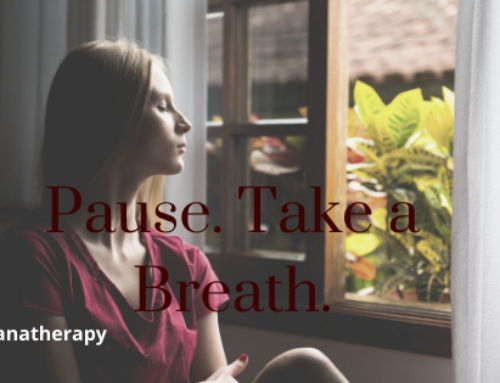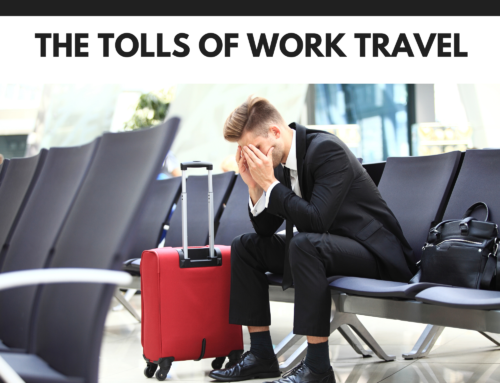COVID, Online Dating, and the Anxious-Avoidant Cycle
Written By: SJ Knowlton, M.Ed., LPC-Intern
If you haven’t read Gabi’s great blog about the book Attached feel free to get a refresher on attachment styles before reading this. But if you’re only up for one blog today, I’ll be doing a quick recap of attachment styles for you.
At this point in the madness that is quarantine if you’re not dating someone already you’ve most likely created a dating profile out of boredom or to get a quick ego boost. Maybe you’ve even been lucky enough to match with some potential people and begin speaking with them and trying to decide if you like them enough to brave meeting a stranger in public. Or maybe you’re still talking to someone from before COVID started but you just can’t get a read on them. They seem interested, but then they pull back. You double text them and they respond with the dreaded “K.” But you go silent for a couple of days and bam, there they are, blowing up you Snaps or DMs or texts. Right when you’ve decided they’re just not that into you they’re sending all the signals that they are. It’s exhausting and intoxicating. You respond back with the same eagerness and then they fizzle out again. Rinse. Repeat.
If this has happened to you, whether in person or through online dating, it’s most likely the anxious-avoidant cycle. What is that, you ask? Well it has to do with our psychologist friend and founding father of emotionally-focused therapy, John Bowlby. He studied attachment styles, which is the way we engage in relationships. There are three major kinds that the most study has been done on; anxious, secure and avoidant. Anxious attachment people crave intimacy over everything. They’re more likely to perceive possible negative connotations from their partners and seek closeness in order to feel more secure. If they don’t get the attention or intimacy they need, they may even lash out at their partner in order to get their attention. This is called “protest behavior.”
Secure attachments find intimacy easy to give and receive. They are good at communicating their needs and tuning into their partner’s as well. They are #baegoals.
Avoidant attachments find intimacy suffocating. They want to be close to people but it quickly becomes too much, so they push away from their partners. Once they feel they’ve reestablished their independence they will be ready to become close to their significant other again, as long as they feel they can emotionally or physically get their space at any time. If they can’t, they will create it by leaving the relationship or pushing their partner away through actions or words.
Anxious and avoidant attachments are polar opposites. But, they are the most likely to attract one another and engage in dating. It often ends disastrously because they are not able to communicate enough or give the other the intimacy or space they crave. It ends up looking like an epic game of hide-and-go seek, with the anxious attachment constantly seeking and the avoidant hiding. When the anxious gets frustrated and gives up, the avoidant feels safe enough to come out to play because they feel they are no longer being hunted. But this also results in the anxious attachment feeling insecure and often angry. Therefore, they will cling to their partner even harder in order to stop them from leaving again. Which, of course, makes their avoidant partner leave.
Being in the cycle can feel like intense attraction and connection. It’s exciting. For the anxious, they are constantly on edge, wondering when or if their partner will show up. When they get attention, it feels like an intense high because of the intimacy drought experienced beforehand. For the avoidant, they enjoy the intimacy until they don’t. Exiting from the situation feels like overwhelming relief and rejoining their partner makes them feel wanted and important. But in the end, neither is truly getting what they want. In fact, they’re often bringing out the worst in one another.
This is not to say that these attachment styles can’t work together. They can, but it takes a lot of awareness, compromising and sacrifice to make it work smoothly. If your partner isn’t willing to own up to their needs, communicate them and give you what you need, it’s probably not worth the emotional rollercoaster. All attachment styles are valid. None are worse than others. Although most of us would prefer to be secure, it might not be fully possible or only possible if our partner is able to make us feel safe and deactivate our nervous system responses to perceived abandonment or smothering. And that won’t be possible if their needs are opposites.
So, what does this have to do with COVID and online dating?
First off, anxious and avoidant attachments are the most common types of attachments. Therefore, they are most likely to be found on dating sites and apps.
Secondly, avoidant attachments actually have the highest “turnover” rate in apps because they are more likely to leave their relationships quickly and reenter the dating pool. If you’re able to stay cool while your partner asks (or takes) space from you, this won’t be a problem. However, if you’re an anxious attachment style who has been burned by this cycle in the past, someone showing intense interest followed by silence is a good indicator that they might not be a good fit for you. They might even be into you, in their own way, but unable to meet your needs. (I’m speaking to anxious attachments here because they are more likely to be wounded by this cycle than avoidants, who find it easy to detach emotionally).
Here are some things to look for in order to avoid this cycle while in the dating world. Even at the app stage.
**These responses are all based on real things I’ve experienced or heard from friends.
Red Flags for Anxious Attachments in Early Dating:
- Inconsistent response rates
Takes hours or days to respond, responds consistently, then stops again.
- Inability or unwillingness to make plans ahead of time or to define the relationship
Why put a label on this? I spend a lot of time/talk with you, doesn’t that mean something?
Hey, you free in an hour?
Let’s play it by ear.
- Talks about their exes or future SO in idealized terms
My future wifey/husband will be xyz
My ex was great at abc *dreamy face*
- Mixed signals; might even put you down or call you needy/sensitive
God, you’re amazing but you’re so sensitive sometimes.
I’m trying my hardest because I really like you but you make it hard by being needy.
- Unwilling to read your verbal/nonverbal cues
Silence or subject change
- Doesn’t change if behavior if it inconveniences them—will address issues from fact-based place instead of emotional
I am busy, I don’t have time to text you during the day and that’s a ridiculous ask.
But it’s easier for you to drive to me, it shouldn’t matter that it makes you feel less important or that you’re tired. It’s just simpler for you to do it.
Red Flags for Avoidant Attachments in Early Dating
- Unable to effectively communicate needs
Is obviously upset but is unable pinpoint why.
“I don’t know what I need but I am upset with you anyways”
- Becomes upset when you won’t commit to plans or labels
We’ve been dating a long time, why can’t I be your boyfriend/girlfriend?
Whatever, we just won’t meet up this week if you can’t be bothered to make plans.
- Wants to spend more time together or talking than you are comfortable with and reads your need for independence as hurtful or deliberately punishing
I’m worried you don’t like me anymore because you don’t want to hang out tonight.
When you don’t respond to me it makes me feel like you are angry with me.
- Wants to talk about feelings and emotions a lot
How does that make you feel?
What was your childhood like?
- Needs reassurance of your interest often
Do you still like/love me?
What do you like about me?




